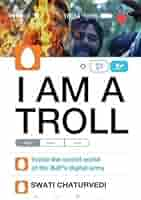On May 3, 2023, the serene corridors of India’s prestigious Defence Research and Development Organisation (DRDO) were rocked by a stunning revelation: a senior scientist—entrusted with the nation’s most guarded military secrets—had been arrested for espionage. The man at the heart of the scandal was Dr. Pradeep Kurulkar, a veteran engineer, a former director at DRDO Pune, and, as he openly claimed, a fourth-generation member of the Rashtriya Swayamsevak Sangh (RSS).
What unfolded was a tangled tale of honey traps, high-tech espionage,
and ideological irony—raising difficult questions not just about personal
vulnerability, but about institutional safeguards and the politicization of
patriotism.
A National Security Nightmare
Kurulkar wasn’t just any scientist. He was the director of R&D
(Engineering) at DRDO’s Research and Development Establishment (Engineers) in
Pune, a key division involved in developing sophisticated infrastructure for
India’s armed forces. His work encompassed missile launcher systems, drone
technology, unmanned combat aerial vehicles (UCAVs), military bridging systems,
and next-generation robotics.
According to the Maharashtra Anti-Terrorism Squad (ATS), Kurulkar was lured
into an online relationship by a Pakistani intelligence operative posing as
a UK-based software engineer named "Zara Dasgupta." Through
flirtatious conversations, WhatsApp messages, and late-night video calls, she
managed to entice him into sharing classified information critical to India’s
national security.
The alleged communications occurred between June 2022 and February 2023.
During this period, Kurulkar is believed to have leaked details on the BrahMos
missile system, Agni-6 launcher configurations, Rustom UAVs, UCAVs, and other
classified DRDO projects. He reportedly had a 186-page initial design
report of BrahMos stored on his personal electronic devices and expressed
willingness to reveal more sensitive content in a face-to-face meeting with the
operative.
The ATS investigation uncovered an enormous volume of evidence: over 1,800
pages of chat logs, emails, deleted documents, photos, and explicit exchanges.
These were recovered from multiple devices, including phones, laptops, and USB
drives. Kurulkar allegedly attempted to submit a decoy laptop for forensic
analysis, but forensic teams successfully recovered data from his original
devices.
For example, one of the text exchanges recovered read:
Kurulkar: "Plan today: 1
camera trap peripheries, 2 thermal drone scanning in the evening..."
Zara: "This is plan for
today and tomorrow? It seems hectic."
These kinds of messages showed not only a shocking disregard for
operational secrecy but also a personal eagerness to impress his virtual
companion.
A Family Steeped in Sangh
The espionage case quickly turned into a political firestorm when
Kurulkar’s ideological affiliations were made public. In a pre-arrest interview
that later went viral, Kurulkar stated:
"This is our fourth generation in RSS. My grandfather was a
swayamsevak. My father was a branch treasurer. I started attending shakhas at
the age of five. My son also participates regularly."
For many, this confession came as a jarring contradiction. The RSS, often
seen by its supporters as the fountainhead of patriotism, discipline, and
cultural nationalism, was now being linked—through one of its loyalists—to an
act of betrayal at the highest level.
Congress spokesperson Pawan Khera did not mince words. He described
Kurulkar as a “saxophone-playing Sanghi,” referring to his musical
contributions at RSS events, and alleged that he had been Sangathan Mantri
of Sanskar Bharati, the cultural wing of the Sangh Parivar.
Images soon surfaced showing Kurulkar at RSS book launches, addressing
shakhas, and offering prayers at a statue of Vinayak Damodar Savarkar. Whether
symbolic or coincidental, these associations provided enough political fodder
for the opposition to question the government's over-reliance on ideological
filters in appointments and clearances.
Kurulkar’s case exposed an uncomfortable truth: that proximity to
nationalist organizations is often treated as a proxy for loyalty, even in
strategic sectors like defense and intelligence.
The Legal Quagmire
On June 30, 2023, the Maharashtra ATS filed a detailed 1,837-page
chargesheet against Kurulkar under the Official Secrets Act. His bail
plea was denied by a Pune sessions court in December 2023. The court noted the
severity of the charges and the national security implications as grounds for
continued custody.
The ATS has since sought permission for conducting a polygraph test and
psychoanalysis to evaluate Kurulkar’s mental state and motivations. According
to sources, the scientist continued his interactions even after being made
aware—directly or indirectly—that he was in contact with a foreign agent. The
implication is damning: this wasn’t a lapse; it was a pattern of willful
negligence.
The DRDO, in the meantime, has initiated an internal review of protocols
concerning access to sensitive data, digital security practices, and background
checks for employees in classified departments. Yet, many insiders acknowledge
that much of the damage has already been done.
The larger concern now is geopolitical. With India in the midst of critical
arms development partnerships—including joint ventures with Russia, Israel, and
the United States—such breaches risk undermining international trust and
cooperation.
The Politics of Patriotism
What makes the Kurulkar case especially incendiary is the symbolic
inversion it represents. In a political ecosystem where dissent is
frequently labeled as “anti-national,” the spectacle of an RSS-linked scientist
accused of spying for Pakistan has prompted a broader reckoning.
The opposition has raised pointed questions: If ideological proximity is no
guarantee of integrity, should it continue to be used as a metric for loyalty?
Are appointments in sensitive national institutions being influenced by
political bias rather than professional merit? And most crucially, how did
someone with such intimate ties to the Sangh escape adequate security scrutiny?
Kurulkar’s defense argues that he was emotionally manipulated, that
the so-called "Zara Dasgupta" ensnared him in a web of romantic
delusion. But intelligence officials point out that even if such manipulation
occurred, it speaks to a dangerous lack of psychological vetting within
DRDO's ranks.
This is not the first time a honey trap has been used to compromise Indian
officials, but it may be the most damaging in recent memory, given the
strategic nature of the information allegedly leaked.
Lessons in National Security
The Kurulkar episode underscores a broader, more sobering truth: that
espionage is ideology-agnostic. It does not distinguish between left and
right, nationalist or internationalist. It exploits the human condition:
loneliness, vanity, ambition, and emotional vulnerability.
In today’s digitized world, intelligence threats no longer require trench
coats and encrypted messages. A charming display picture, a few cleverly
crafted texts, and a feigned interest in classical music or missile science is
often enough to breach the firewalls of national security.
What this case also reveals is the urgent need for institutional
insulation from political favoritism. Strategic appointments must be based
on competence, psychological resilience, and ethical clarity—not on shakha
attendance or sangh parivar legacy.
India’s defense apparatus cannot afford another Kurulkar.
A Final Reflection
The scandal is far from over. Legal proceedings are ongoing. The government
remains tight-lipped. The DRDO has largely gone into damage-control mode. But
for many, the deeper damage is to the illusion of infallibility that has
often accompanied ideological fervor.
The Kurulkar case, with its dramatic plotlines of seduction, secrecy, and
sabotage, could one day be the subject of spy thrillers. But in the here and
now, it must serve as a wake-up call for the institutions tasked with
guarding the republic.
Let this episode remind us that patriotism isn’t worn on sleeves or
declared in slogans. It is practiced in the quiet integrity of doing one's
duty—especially when no one is watching.
About the Author:
Siddhartha Mishra is an Advocate at the Supreme Court of India and a
columnist who writes on politics, law, and national security. He can be reached
at ssmishra33@gmail.com.




